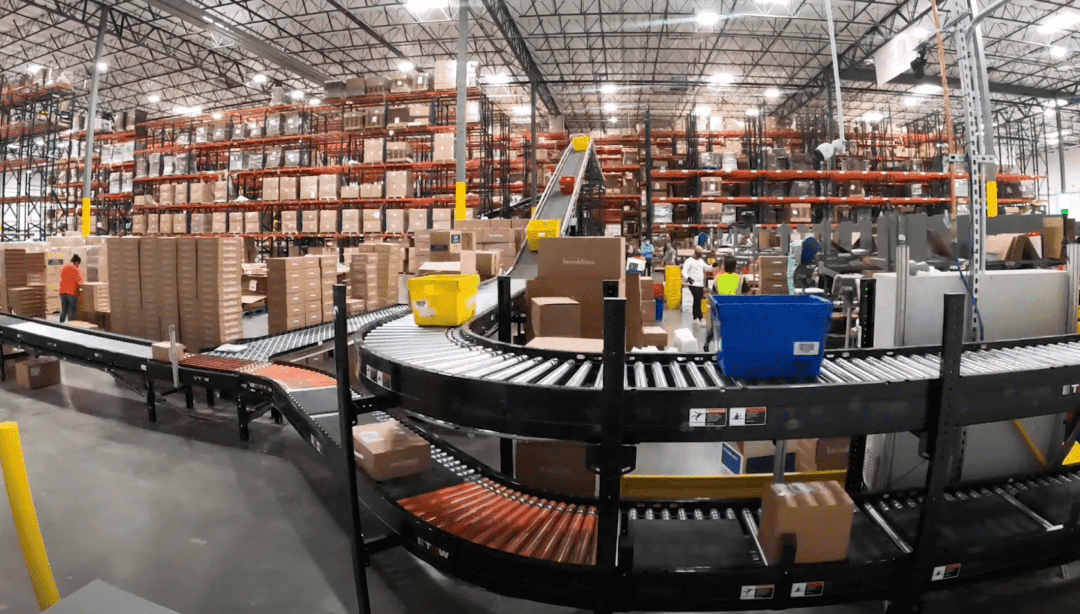The surge in e-commerce over the past decade has profoundly reshaped the industrial real estate landscape. As consumers increasingly turn to online shopping, the demand for efficient and strategically located fulfillment hubs has soared. These fulfillment centers are critical nodes in supply chains, enabling rapid order processing, packaging, and distribution. For industrial Real Estate Investment Trusts (REITs), this shift presents both opportunities and challenges. Navigating the evolving dynamics of e-commerce fulfillment hub models is essential to optimizing asset value and positioning portfolios for sustainable growth.
This article explores the varied fulfillment hub models driving e-commerce logistics and analyzes their implications for industrial REIT investors, operators, and developers.
The Growth of E-Commerce and Its Impact on Industrial Real Estate
E-commerce has accelerated rapidly, fueled by technological innovation, shifting consumer preferences, and recent global events such as the COVID-19 pandemic that heightened online shopping adoption. This growth has increased the volume and velocity of goods moving through supply chains, creating an urgent need for distribution networks that can accommodate fast and flexible order fulfillment.
Industrial real estate, particularly warehouses and logistics centers, has emerged as a vital component of this ecosystem. Demand for large, well-located facilities has intensified, pushing vacancy rates to historically low levels and rental rates upward in many markets. Industrial REITs, which own and operate these properties, have become key players capitalizing on this trend.
However, not all fulfillment centers are created equal. Their design, location, size, and operational model differ substantially depending on their role in the supply chain, the types of products handled, and customer delivery expectations.

Understanding E-Commerce Fulfillment Hub Models
E-commerce fulfillment hubs can be categorized into several primary models, each serving distinct logistical functions:
1. Regional Distribution Centers (RDCs):
These large-scale warehouses serve broad geographic areas, storing a wide range of products. RDCs handle bulk shipments from manufacturers or suppliers and distribute inventory to smaller fulfillment centers or directly to retailers. Located strategically near major transportation corridors, they prioritize scale and intermodal connectivity.
2. Sortation Centers:
Sortation hubs receive packages from fulfillment centers and sort them according to destination before forwarding to last-mile delivery networks. These centers focus on sorting efficiency and regional accessibility, often situated closer to urban hubs to accelerate transit times.
3. Last-Mile Fulfillment Centers:
Last-mile hubs handle smaller inventories and perform final order picking and packaging near consumer clusters. Their key feature is proximity to densely populated areas to enable rapid delivery, sometimes within hours. These facilities are typically smaller, with high turnover rates and advanced automation.
4. Dark Stores:
Dark stores look like grocery or retail outlets but operate exclusively for e-commerce order fulfillment. They offer ultra-fast delivery options for high-demand items in urban centers, blending retail inventory with logistic functionality.
Each of these models varies in terms of space requirements, technology integration, labor needs, and capital intensity. This diversity influences industrial REIT strategies concerning tenant targeting, property acquisition, and operational management.
Industrial REITs’ Role in the E-Commerce Fulfillment Ecosystem
Industrial REITs supply much of the real estate infrastructure supporting e-commerce operations. Their portfolios typically include a mix of logistics properties customizable for the different fulfillment hub models. These trusts benefit from long-term leases with e-commerce firms, 3PL (third-party logistics) providers, and retailers adapting to omnichannel strategies.
Many industrial REITs have proactively repositioned assets, retrofitting older warehouses for fulfillment use or developing new logistics parks near urban centers. Such investments cater to the last-mile and sortation models with demands for speed and proximity, addressing a price-sensitive but highly strategic segment.
The scale, expertise, and capital resources of industrial REITs give them advantages in meeting e-commerce logistics needs. Their ability to deploy capital toward state-of-the-art facilities with technological features like high ceilings, sustainable design, and advanced automation supports tenants’ efficiency goals.
Location Dynamics and Market Considerations
Location remains a critical determinant of fulfillment hub success. Industrial properties adjacent to major highways, ports, rail connections, and urban centers command premium valuations due to transportation efficiency and delivery speed advantages.
Last-mile centers especially emphasize proximity to population centers and access to both road networks and labor pools. The ongoing “urbanization” of industrial real estate reflects this trend, with growing demand for infill sites within or near cities.
However, land scarcity and higher costs in urban areas pose challenges, prompting innovative development approaches such as multi-story logistics warehouses and micro-fulfillment centers integrated into existing retail environments.
Industrial REITs must balance acquisition costs and rents in different geographies, assessing trade-offs between affordability, access, and tenant demand flexibility.
Technological Innovation in Fulfillment Hubs
Technology integration has become a cornerstone of modern fulfillment hubs. Automation, robotics, warehouse management systems (WMS), and real-time analytics drive throughput and accuracy improvements.
Last-mile fulfillment increasingly incorporates automated sortation, AI-powered inventory management, and even drone or autonomous vehicle trials for delivery. High ceilings and floor layouts designed for robot movement enhance operational efficiency.
Industrial REITs frequently collaborate with tenants to support technology upgrades, ensuring properties accommodate sophisticated machinery and data infrastructure. These investments enhance asset desirability and tenant retention but also increase development complexity and expenses.
Financial Implications for Industrial REITs
E-commerce-driven demand has positively affected rental income and occupancy rates across industrial REIT portfolios. Lease structures often include escalations, triple net terms, and long durations, offering relatively stable cash flows.
Nonetheless, the specialized requirements of fulfillment hubs may lead to higher tenant improvement costs and the need for customized facility features, pressuring initial cap rates. Moreover, tenant concentrations in e-commerce sectors can amplify risk, requiring REITs to manage portfolio diversification carefully.
Opportunities for value creation include developing or acquiring properties in emerging logistics corridors, repositioning buildings for last-mile use, and leveraging green building certifications aligned with tenant sustainability objectives.
Challenges and Risks Facing Industrial REITs
Despite prospects, several risks persist. Regulatory pressures in urban areas regarding noise, traffic, and emissions may restrict last-mile facility development. Labor shortages challenge tenants’ operational continuity, affecting lease stability.
Market saturation in certain regions and competition from non-traditional logistics providers pose patent supply-demand imbalances. Additionally, advances in delivery technology may shift demand patterns unpredictably.
Economic shifts impacting consumer spending can influence e-commerce volumes, thereby affecting fulfillment space requirements. Industrial REITs must therefore maintain rigorous market research and adaptable strategies.

Case Examples Demonstrating Impact on Industrial REITs
Leading industrial REITs have embraced these e-commerce trends with differentiated portfolio strategies. For example, investment in dense logistics clusters near major metros has yielded premium rents and strong tenant activity.
In contrast, some REITs have invested in smaller metro markets with growing e-commerce penetration, capturing first-mover advantages. Partnerships with tech-forward logistics operators have further enhanced market positioning.
These real-world adaptations highlight how flexibility, market insight, and active asset management underpin success.
The Future of E-Commerce Fulfillment and Industrial REITs
As consumer expectations for rapid delivery intensify, fulfillment hubs will grow more sophisticated and strategically critical. Industrial REITs are poised to benefit by innovating property offerings, embracing adaptive reuse concepts, and fostering collaborative tenant relationships.
Trends such as sustainability, automation, and mixed-use logistics developments will increasingly influence asset design and value. Industrial REITs that anticipate these shifts and invest accordingly will capture growth while mitigating emerging risks.
Moreover, the continued globalization of supply chains means cross-border e-commerce growth also fuels demand for fulfillment capacity, encouraging REITs to explore diverse geographies.
Conclusion
E-commerce fulfillment hub models are reshaping the industrial real estate sector with profound implications for industrial REITs. From regional distribution centers to last-mile hubs, the spectrum of property needs demands agile investment strategies, operational excellence, and innovation.
Industrial REITs that successfully align their portfolios with evolving e-commerce logistics requirements will unlock significant valuation upside and resilience in a dynamic market. Through thoughtful location selection, technological integration, and adaptive management, these REITs can prosper amidst shifting consumer behaviors and supply chain transformations.
The continued rise of e-commerce guarantees that flexible, efficient, and strategically positioned fulfillment hubs will remain central to both industrial real estate and the broader economy, reinforcing industrial REITs’ vital role in this evolving landscape.
Frequently Asked Questions about E-Commerce Fulfillment Hub Models and Industrial REITs
-
What are e-commerce fulfillment hubs?
E-commerce fulfillment hubs are specialized warehouses that manage inventory, order processing, and shipping for online retailers. -
How do fulfillment hub models differ?
They vary by function—regional distribution centers focus on bulk storage, last-mile hubs prioritize fast delivery near customers, and sortation centers organize packages by destination. -
Why are fulfillment hubs important to industrial REITs?
Fulfillment hubs drive strong demand for industrial real estate, providing stable tenants and increasing portfolio values for REITs. -
How does location impact fulfillment hub success?
Proximity to transportation networks and urban centers is critical for reducing delivery times and operational costs. -
What role does technology play in fulfillment hubs?
Automation, robotics, and data analytics improve efficiency, accuracy, and scalability in warehouse operations. -
What financial benefits do fulfillment hubs offer to industrial REITs?
They often command higher rents, long-term leases, and lower vacancy rates, enhancing cash flow stability. -
What challenges do industrial REITs face with e-commerce demand?
Risks include regulatory constraints, capital-intensive upgrades, tenant concentration, and labor shortages. -
How are industrial REITs adapting to e-commerce trends?
REITs invest in flexible properties, partner with logistics operators, incorporate technology, and focus on prime urban locations.










